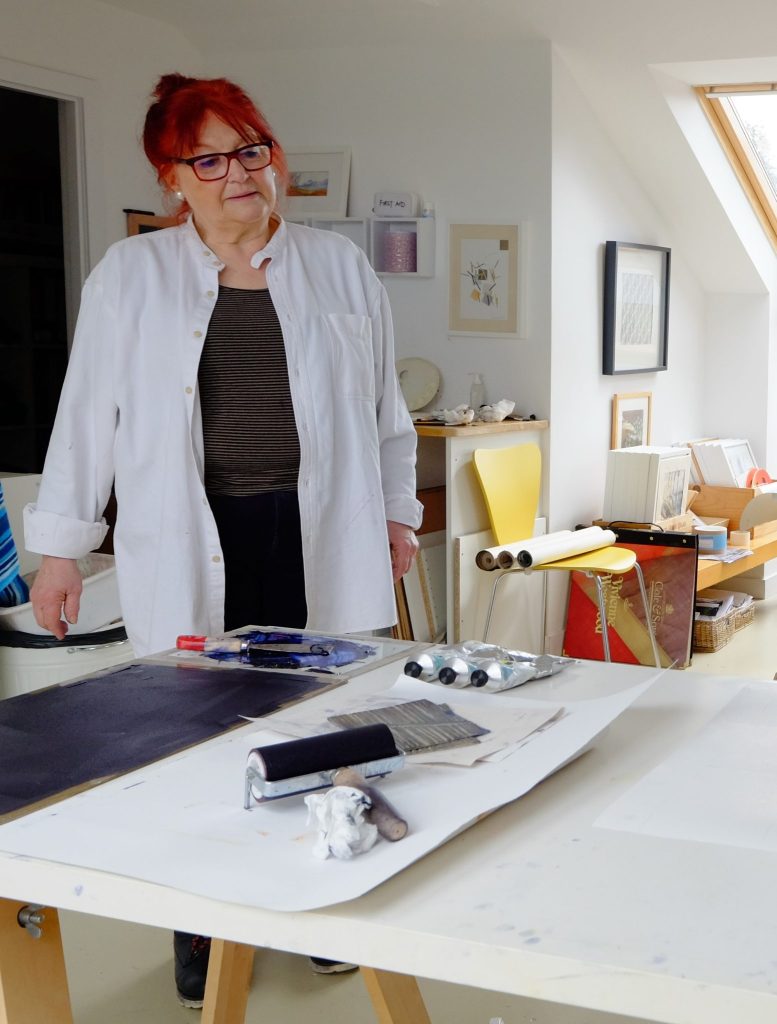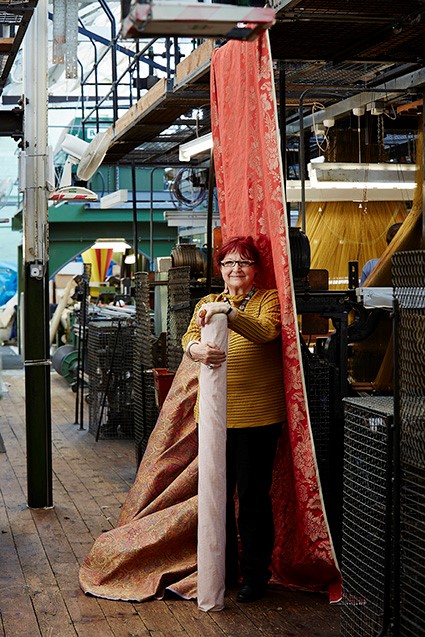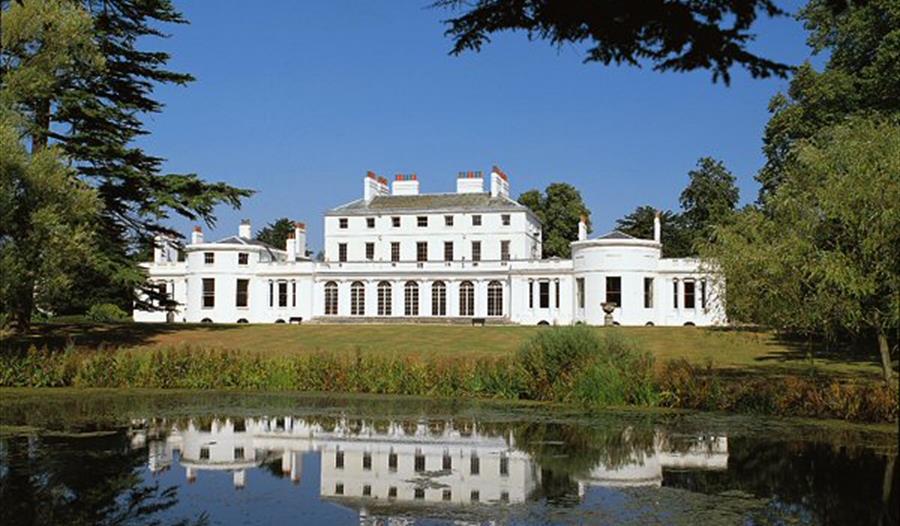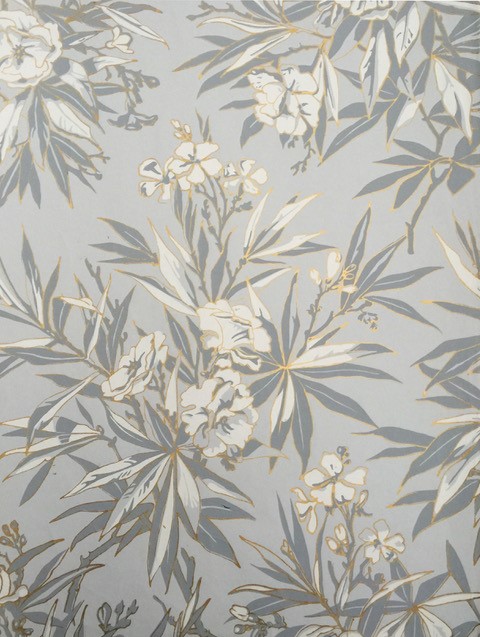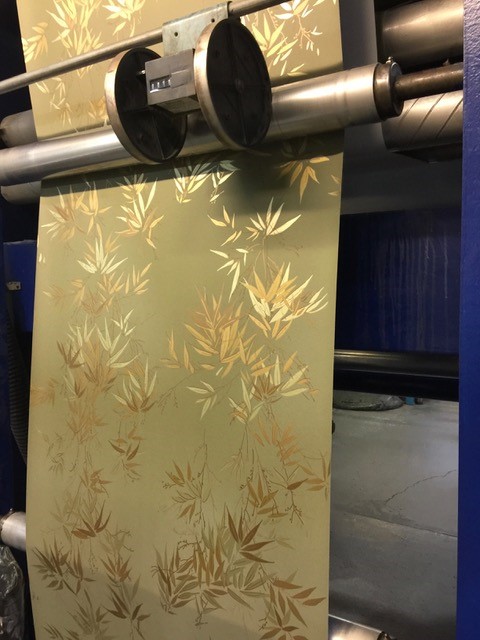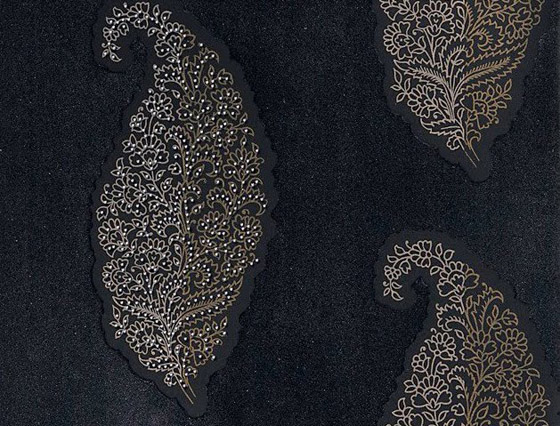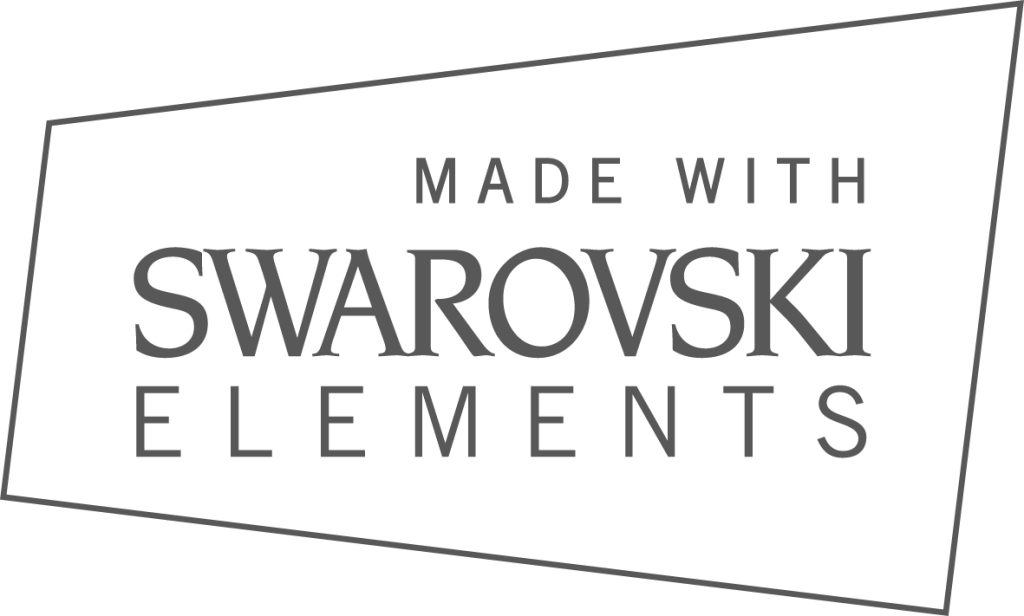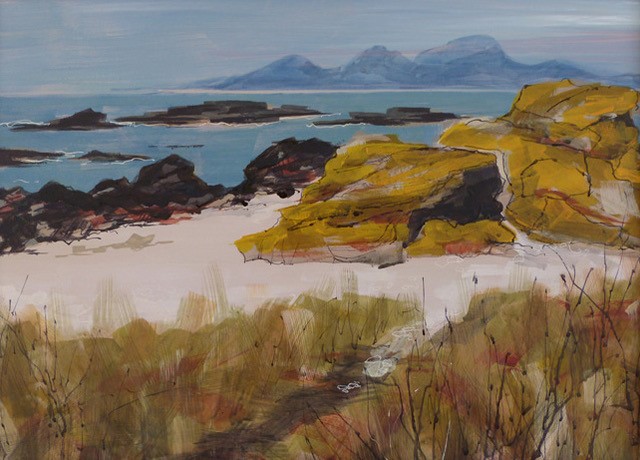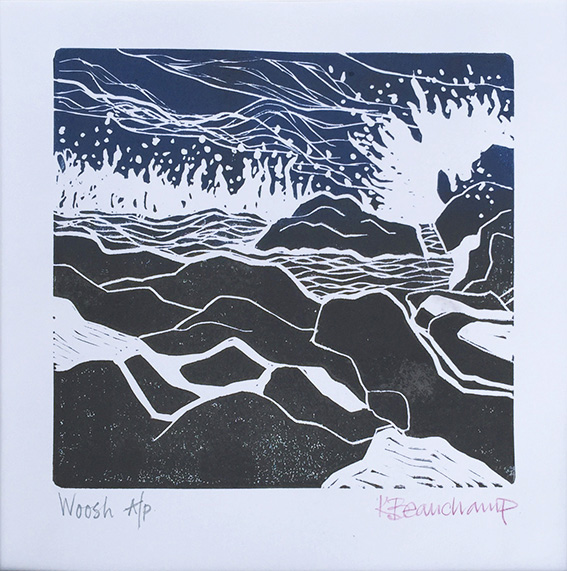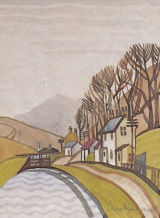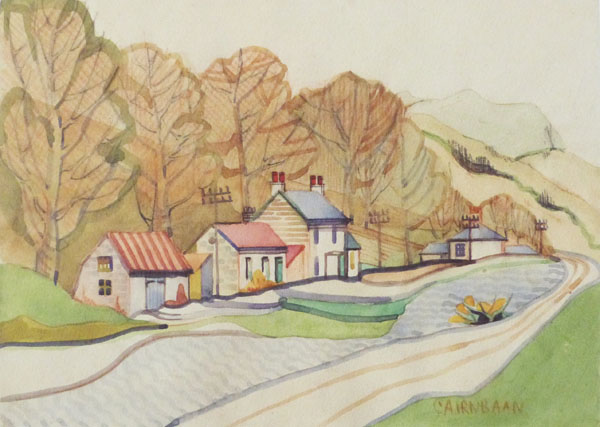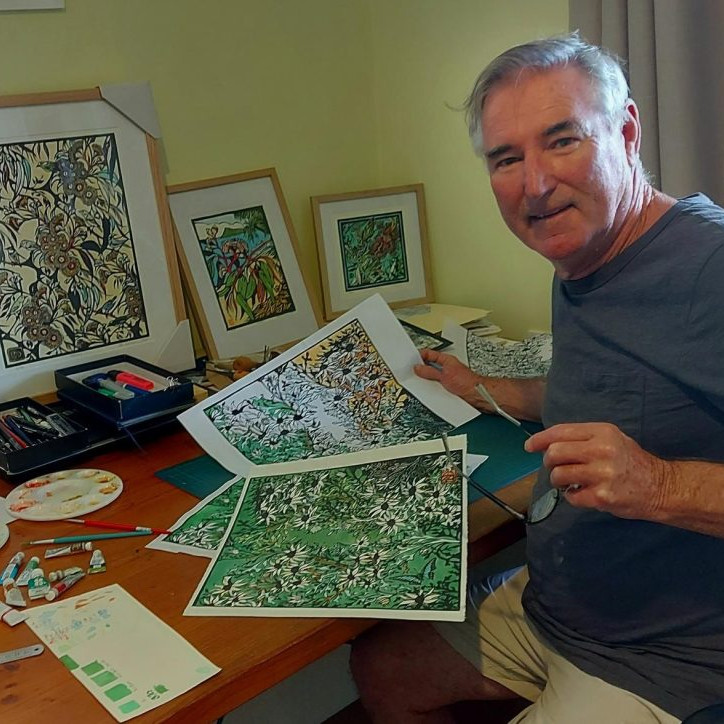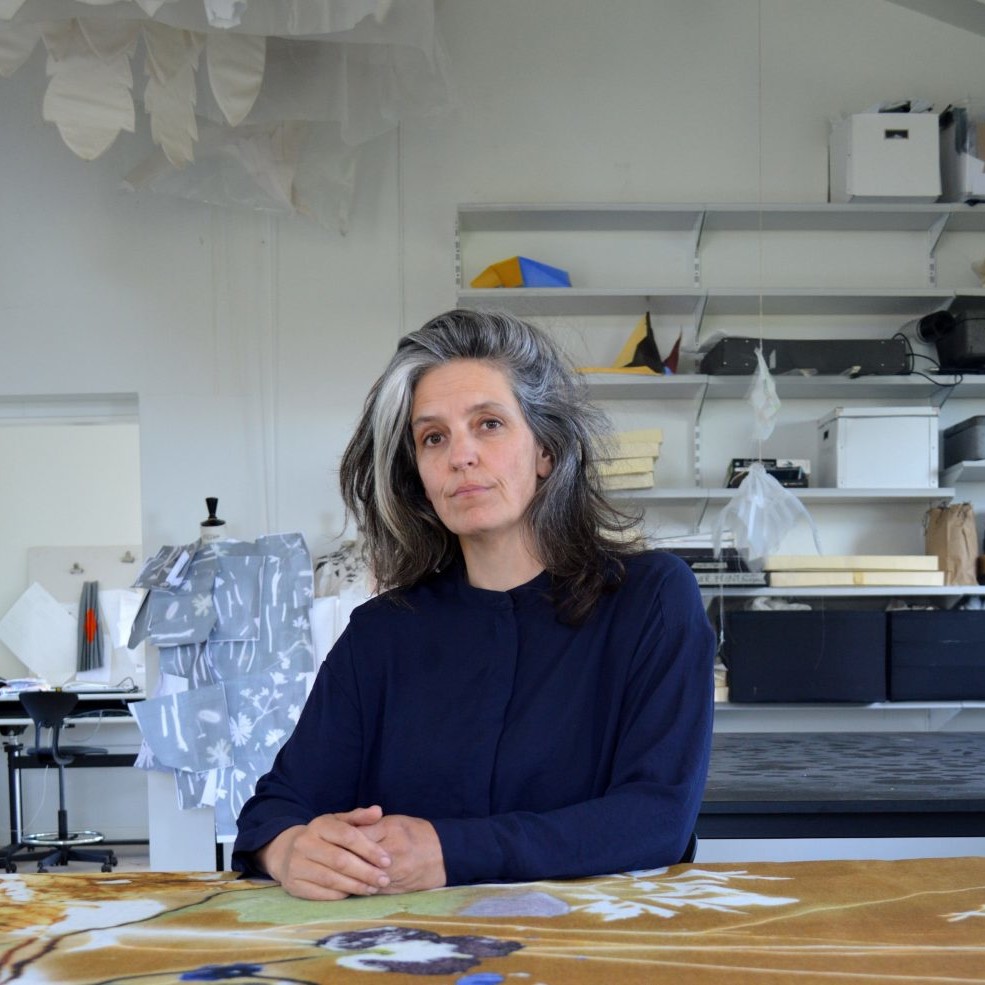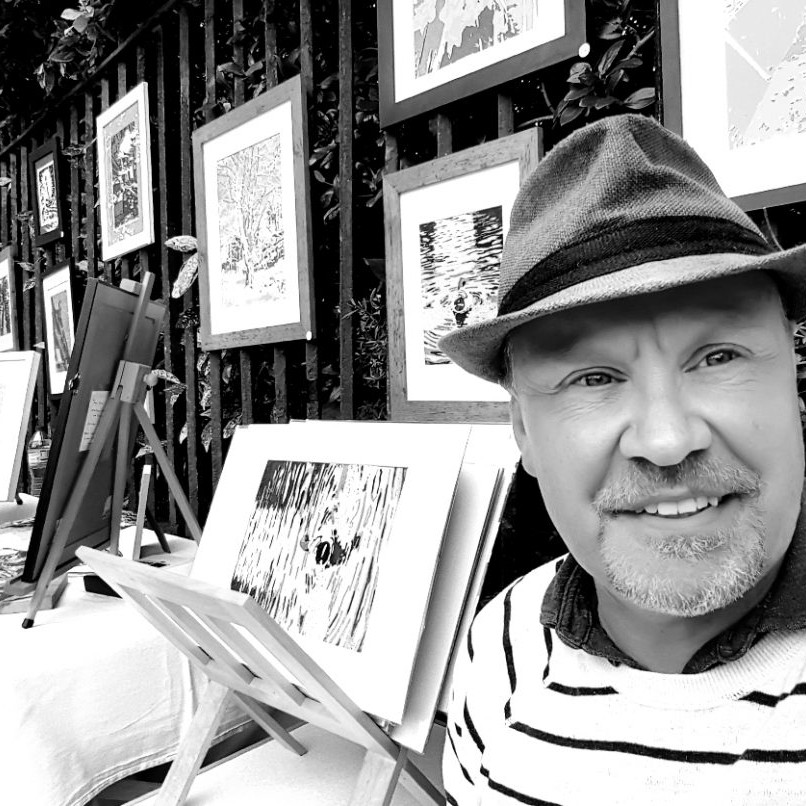Karen Beauchamp Wallpaper Designer /Printer - Argyll, Scotland
You original training was as an architect, how has this influenced your current artistic work?
My architectural training is something that I am thankful for every day.
The course taught us to think in a different way, to analyses a problem from a practical point of view also to think from the foundations upwards.
The other thing that has influenced my career is spatially awareness, I am not sure if this is a learned skill or a natural one, but it is very useful.
Can you expand on your change of direction in 1978 and setting up your own company producing hand painted wallpaper?
My life has been full of crossroads and opportunities, and I have rarely gone for the safe option.
I had moved to the Isle of Man (of TT Races fame) with my partner and at the time and subsequently looking for a job. I thought that it would be easy as there was a building boom and several architectural practices on the island. However, there were no vacancies at all, I was recounting this to Phil the carpenter who was repairing the windows in the house we bought. He suggested that I met two of his friends who he played in band, both graphic designers – George and Charlie. They had a very small business making T-shirts and posters for the Manx businesses. We got on well and decided to join forces set up a graphic design and printing company. My role would be to go out and get business and attend to the administration.
After a few weeks I was also helping with the artwork and making screens as well as my other tasks loving every minute of it. One Saturday the ‘boys’ were supposed to come into work and finish a job for the local hotel, who were sponsoring a sporting event that afternoon. They had, had a late night with the band and did not turn up. I was forced to pick up the squeegee and make my very first screen print!!! I managed fairly, well and delivered the shirts on time. I was completely hooked from that moment on. All I wanted to do was print!
I worked on as many print projects as I could, leaving George and Charlie to do the design and artwork while I took over the printing.
One day an old acquaintance from London popped in, he was an antique dealer but unbeknown to me an avid collector of historic wallpapers. He asked me if I would reproduce some wallpapers for him. I had no knowledge, but I said that I would have a go!
I knew how to do the colour separations, after that it I was in virgin territory.
I had to solve the problem from the foundations upwards and in those days ‘You tube” did not exist. I set up a “Stick and String “printing station using the beautiful Sias flatbed screen printing bench, we had just bought together with the drying rack and hair dryers hanging from the ceiling, two broom handles to hold the roll of paper. I worked out how to register the colours and the consecutive prints – leaving one and then printing one all down the roll and then printing in the gaps in such a way that you would not notice the joins. All skills that I have now perfected over the years with experience.
The next task was to mix the colours to match the faded casein colours of the old block prints, this was the most enjoyable thing for me and later when I was able to train and employ a printer I continued to mix all the colours.
I did ten jobs for David the antique dealer until he decided he had enough paper for the house he was doing up, I was bereft, as I had really found my passion. I went down to London, made appointments with interior designers who commissioned work, some of whom are still in contact today forty years later. I also made an appointment with English Heritage – their interiors specialist Pamela Lewis, was my last appointment. I remember the day, it was cold wet and gloomy, and my spirits were not that high, as I had not really had any success only a few nice comments. Pamela was very quiet while going through my portfolio and I thought that she was not that impressed until she said that ‘I had a good eye” and that she would give me a commission; which was – Osbourne house. Late Queen Victoria’s house on the Isle of Wight – they were renovating the nursery
This was the real start – I was on my way!
Having commissions from Osbourne House and Frogmore would be both rewarding and confirming discuss.
Osbourne House was a twelve colour screen print over a block printed mica moire ground and I was asked to collaborate with Denis Hall at Cole & Sons who were to make the ground. This gave me the opportunity to both visit Coles and to meet Denis who was a legend in the wallpaper industry.
The Nursery at Osborne House
The job took a long time as the specification were very exacting, the results were well received.
Therefore, English Heritage commissioned me to make two further papers for Frogmore House.
Frogmore is a private family house in the grounds of Windsor Castle – built for George III and Queen Charlotte, it is now a retreat for current royals.
Frogmore House and Gardens open to individuals in aid of three different charities chosen by The Queen.
Paper for the Music Room at Frogmore
The spaces in the house are large and the ceiling height is four or five meters, this provided a huge challenge for me as there are many technical aspects of printing paper for such a large space. One being shading, where there is a slight shift of colour density from right to left of the paper and this can also occur in the other direction. The other being, physically making enough colour and seeing that it remained the same consistency all through. We also numbered the rolls so that they were hung in the same order as they were printed.
Queen Charl0tte’s Drawing Room paper, Frogmore
I was terrified when I visited to see the result and walked into the room backwards! However, the paper had been expertly hung and looked good and this was a huge relief and joy to me.
Comment on your personal thoughts on the value of companies having archival collection?
Archives are wonderful and very beneficial for companies to own, they are expensive to maintain, and accountants do not necessarily see their true value. The fact of the matter is that they should be viewed on many different levels.
The first level being the original authentic designs printed or made in the traditional way. A recording of the history of the company, design and manufacture. They also provide details such as colour and balance.
The second and most important level is in the inspiration that they provide. Looking deeper into a design and adapting from the original according to the mood of the current day, by editing, simplifying, rescaling or radically changing the colouring. There is so much that can be reused.
The third level is one that fascinates me and that is the texture and fine detail on the original documents either created by the traditional process or by age.
Archives are a constantly changing source of inspiration a fact that is not always appreciated.
How do you keep your own records for the future?
I have a large store room for my wallpaper books and rolls on racks that have been specially built. I also have boxes and boxes of bits and pieces of inspiration and I am constantly collecting new and interesting things – but my headspace is also important as I am blessed with a lateral thinking mind!
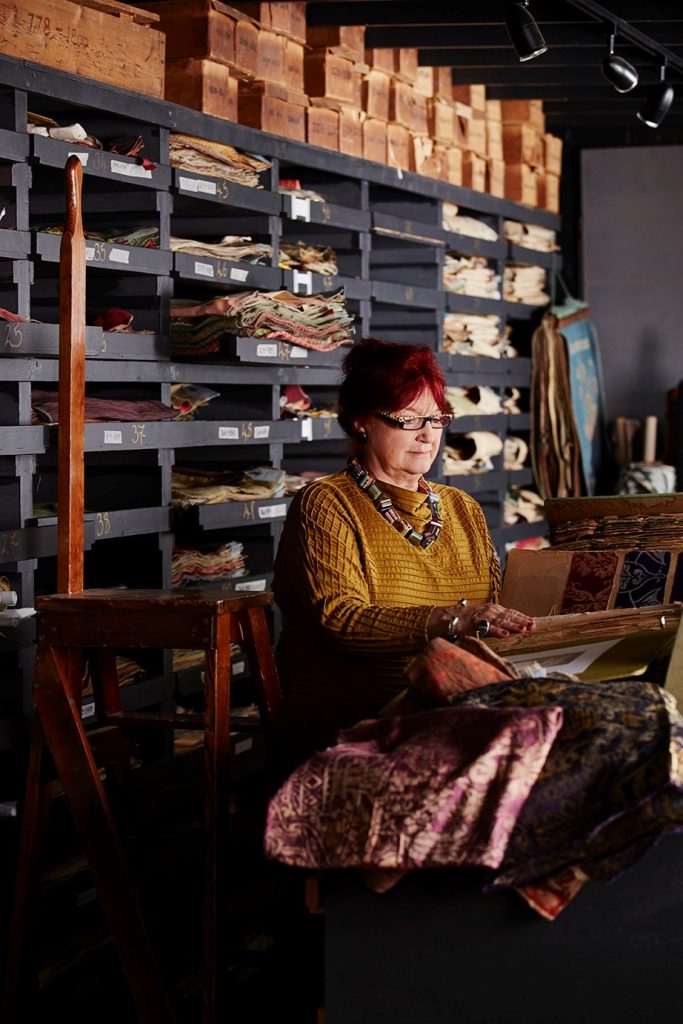 Karen Beauchamp working on the Renaissance Collection for Gainsborough Silk Weaving Company, and in their archive.
Karen Beauchamp working on the Renaissance Collection for Gainsborough Silk Weaving Company, and in their archive.
You are a member of the Wallpaper History Society. Expand on the importance of this niche society in a modern context.
Today most people think that they are seeing so much in the shops, on tv and in magazines that there is nothing new to see.
I can say from experience that when I have shown original pieces of historical wallpapers to friends and colleagues who are not in the wallpaper business they are very often blown away by the originality and skill, also by the complexity, colour and delight that old wallpapers can bring.
The wallpaper History Society was set up to hold the information and knowledge by bringing together a group of highly enlightened and interested people from all related spheres.
The society is interested in expanding the world of wallpaper and bringing in new, young and skilled members to participate.
Wallpaper is a reflection of social and cultural history on walls.
Isidore Leroy collection
Can you discuss design and bling, and introduce your YouTube video, ‘Swarovski Elements’?
In 2010 after leaving Cole & Son, I was asked to work with Swarovski to pull together a collection of bejewelled wallpapers.
Swarovski are world renown for their bling and for crystals of quality. My aim was to unite the crystal world with the interior design sphere by using the unique quality of the crystals but allowing them to have a warmer more seductive quality for interior use.
The inspiration for the collection was decadent old Venice. By introducing the textures of satin (mica on wallpaper) Flock, leather and suede effects, the crystals would sit more harmoniously in many different types of interior.
At first the company did not understand the importance of texture especially the flock, but once the first piece came off the printing press it was obvious that we had something special.
I really enjoyed working with the company they have an amazing repertoire of
products and it was such a joy to play with so much potential.
SWAROVSKI ELEMENTS wows London with new Wallpaper Collection
SWAROVSKI ELEMENTS wows London with new Wallpaper Collection
Click above to view the Youtube
Discuss your ‘Colour Series’ and how you use details of the landscape in this series.
Living on the west coast of Scotland, I am constantly stopped in my tracks by the beauty of the colour around me. The more I look the more I see, that applies to shape and texture as well.
The Colours of Kintyre, Mixed Media painting
The topography here is astounding – the rocks are extraordinary, there are long deserted sandy beaches – rolling breakers and raised beaches. Views of islands like Jura, Islay and Gigha, wide expanses of sea between and mega skies. Every day is inspiring whatever the weather.
Winter is the best season, as the light is very blue and the colours very clear. Generally, the weather is good in winter, like today two days after Christmas and the landscape is rich. The trees are bare, and their structure is there for all to see, soft grey trunks against rich inky blue hills. I could go on forever.
When I sit down to paint outside or inside I delve into my box of tricks. I love experimenting with colour – I often paint in just two colours my favorites at the moment are Burnt Sienna and Ultramarine. There is a wealth of possibility there, from warm to cool and lots of fabulous neutrals.
I tend to be totally obsessed by a subject now it is seaweed. I love the texture, colour and the shapes. I have rocks and seaweed hanging up all round my studio, they are like huge musical instruments.
I will paint from them for colour and make lino prints for shape.
I very much enjoy taking out the students who come on my painting holidays on location – they are all completely absorbed by the environment and we can spend whole days out painting and drawing with a traditional picnic lunch.
Rocks and Pebbles series
You have three works in the Crinan Canal Prints by your mother, Kaye Marris, explain the importance of connection of place and family to these prints.
Cainbaan Canal, April 1942, Kaye Marris
My father was Scottish and came from north east Scotland near Wick and Thurso, I never visited the area when I was young as he lived most of his life in Surrey.
When my daughter decided to go the Glasgow University, it was my excuse to visit Scotland. Eventually she married and became a farmer’s wife on the west coast south of Oban which is the gateway to the Hebrides. This is when I started to understand the beauty of this part of the world.
In 2009 I sold Cole & Son, deciding it was time to buy a house in Scotland after lots of searching I found a glorious Arts and Crafts house forty miles south of my daughter.
My Mother died in 2010 and while going through her papers I found her portfolio, in which were five paintings of the Crinan Canal, it was instantly recognizable. I subsequently found out that she had visited my Step Father at the army internment camp he was in charge of in Crinan and I gather from correspondence that she was there for about three months (all before I was born) during which time she did these paintings.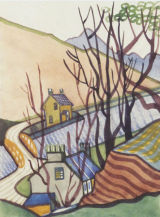
Cainbaan Bridge, April 1942, Kaye Marris
The irony is that Crinan is exactly halfway between where my daughter lived and where I live! Life is very strange. My daughter now lives on the canal.
We all love the Crinan Canal – the most beautiful short cut in Scotland.
Discuss the importance of space in relationship to design found in your work.
Meconopsis
Space in painting gives point to the work and it is challenging to portray, working with colour and balance, especially where the sky is the dominating feature including rainbows and shafts of sunlight. I am always stuck by the spatial relationships in the landscape and well as in the interior.
Contact details:
Karen Beauchamp
Whitehouse Studio (Art Holidays)
Karen Beauchamp, Argyll, Scotland
Interview by Deborah Blakeley, February 2018
Think a colleague or friend could benefit from this interview?
Knowledge is one of the biggest assets in any business. So why not forward this on to your friends and colleagues so they too can start taking advantage of the insightful information the artist has given?
Other artists you may be interested in:



